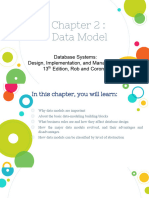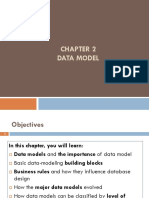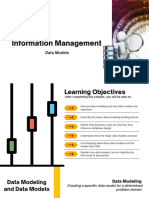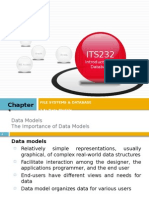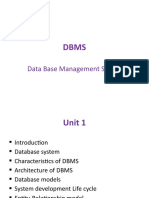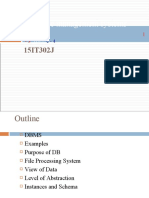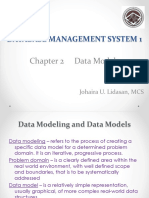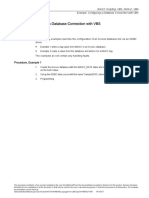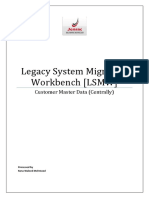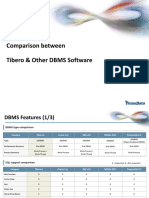0% found this document useful (0 votes)
81 views33 pagesLecture 1b Data Models: Reference Textbook: An Introduction To Database Systems Eighth Edition C.J.Date
This document provides an overview of data models and their evolution. It discusses hierarchical, network, relational, entity-relationship, and object-oriented data models. The hierarchical model was developed in the 1960s and formed the basis for current data models. The network model improved on the hierarchical model by allowing a record to have multiple parents. The relational model, developed by Codd, represents data as tables and relates tables using common attributes. The entity-relationship model graphically represents entities and relationships. The object-oriented model stores data and relationships in objects.
Uploaded by
dpriya84Copyright
© Attribution Non-Commercial (BY-NC)
We take content rights seriously. If you suspect this is your content, claim it here.
Available Formats
Download as PPT, PDF, TXT or read online on Scribd
0% found this document useful (0 votes)
81 views33 pagesLecture 1b Data Models: Reference Textbook: An Introduction To Database Systems Eighth Edition C.J.Date
This document provides an overview of data models and their evolution. It discusses hierarchical, network, relational, entity-relationship, and object-oriented data models. The hierarchical model was developed in the 1960s and formed the basis for current data models. The network model improved on the hierarchical model by allowing a record to have multiple parents. The relational model, developed by Codd, represents data as tables and relates tables using common attributes. The entity-relationship model graphically represents entities and relationships. The object-oriented model stores data and relationships in objects.
Uploaded by
dpriya84Copyright
© Attribution Non-Commercial (BY-NC)
We take content rights seriously. If you suspect this is your content, claim it here.
Available Formats
Download as PPT, PDF, TXT or read online on Scribd
/ 33


